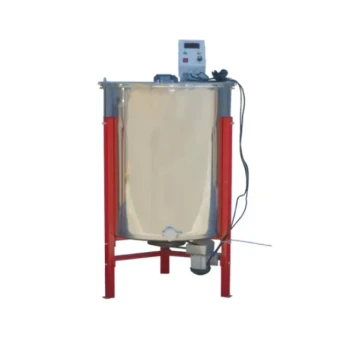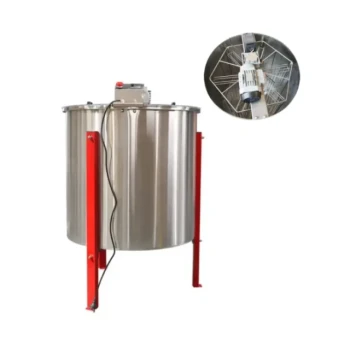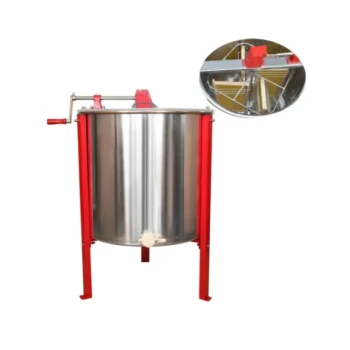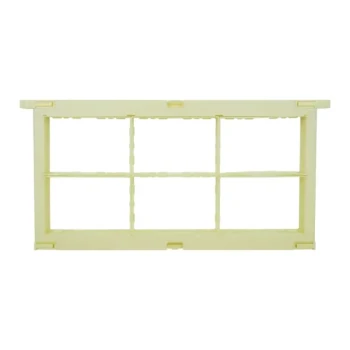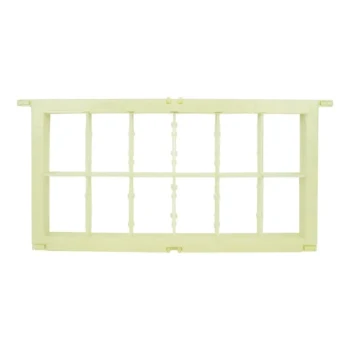At its core, a solar waxer's interior consists of two key trays working in tandem under a glass lid. The top, perforated tray holds the raw comb and acts as a primary filter, while a solid drip tray or collection pan below gathers the pure, melted wax as it separates from debris. These components are typically made of stainless steel to withstand high heat and ensure durability.
The genius of a solar waxer is not in its complexity, but in its elegant simplicity. The internal components are designed to leverage basic physics—the greenhouse effect and gravity—to efficiently melt and purify beeswax with zero energy cost.
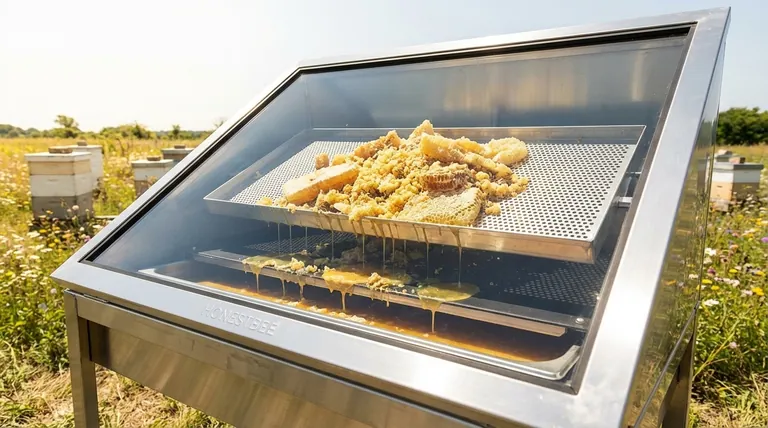
How a Solar Waxer Works: The Role of Each Component
To truly understand a solar waxer, you must see it as a system where each internal part has a distinct job in capturing heat and separating materials. The entire process is passive, driven only by the sun.
The Glazing: The Engine of Heat
The top of the waxer is a pane of glass, which is the most critical component for generating heat. High-strength, double-glazed glass is the industry standard for effective models.
This glazing creates a greenhouse effect. It allows short-wave solar radiation to enter the insulated box, but it traps the long-wave heat that radiates from the internal components, allowing temperatures to reach up to 120°C (248°F).
The Perforated Tray: The First Stage of Separation
This is where the beekeeper places the raw material: old brood comb, cappings, and burr comb. This tray is typically made of metal with small holes across its surface.
As the internal temperature rises, the wax melts and drips through the perforations. The holes are small enough to hold back the majority of impurities—a residue known as slumgum, which consists of old cocoons, pollen, propolis, and other debris.
The Heat Distribution Plate: Ensuring an Even Melt
Beneath the perforated tray sits a solid, dark-colored plate, almost always made of stainless steel. This plate serves two functions.
First, it absorbs a massive amount of solar energy and radiates it upwards, helping to melt the wax from below. Second, it ensures uniform heat distribution, preventing hot spots and guaranteeing that all the wax in the upper tray melts efficiently.
The Collection Tray: Gathering the Final Product
This is the final destination for the pure, liquid beeswax. As the wax drips through the perforated tray, it runs down the heat distribution plate and collects in a dedicated pan or tray at the lowest point of the melter.
This tray is often designed to be easily removable. Once the process is complete and the wax has cooled, the beekeeper can simply lift out the tray and pop out a clean, pure block of beeswax.
Understanding the Trade-offs
Not all solar waxers are created equal. The materials and design of the internal components directly impact performance, durability, and cost.
Material Quality: Stainless Steel vs. Alternatives
The references consistently highlight stainless steel. It is the superior material due to its excellent heat resistance, durability, and ease of cleaning. It will not rust or impart impurities into the wax.
Cheaper models might use galvanized steel or other metals, which can degrade over time, rust, or be more difficult to clean. This is a critical factor for the long-term value of the device.
Glazing: Single vs. Double-Glazed Glass
A double-glazed lid provides significantly better insulation. This means the waxer will heat up faster, reach higher maximum temperatures, and stay hot longer on partly cloudy days. This translates to higher efficiency and greater throughput.
A single pane of glass is a common cost-saving measure. While it will still work, its performance will be noticeably lower, especially in less-than-ideal sun conditions.
Capacity and Angle: Processing Volume and Purity
The size of the trays determines how much wax you can process in a single batch. A larger surface area means more comb can be melted at once.
Furthermore, the angle of the internal plates is crucial. A steeper angle encourages the melted wax to run off quickly into the collection pan, minimizing its contact with the hot slumgum and resulting in a cleaner final product.
Making the Right Choice for Your Goal
Your decision should be guided by the scale of your operation and your primary objectives.
- If your primary focus is maximum efficiency and throughput: Prioritize a model with double-glazed glass and a large-capacity, all-stainless-steel interior.
- If your primary focus is processing a small amount of wax on a budget: A smaller, simpler unit with single-pane glass will get the job done effectively for a hobbyist.
- If your primary focus is achieving the purest possible wax: Look for a design with a steep drip angle and a fine mesh on the perforated tray to maximize filtration.
Understanding how these components function together empowers you to select or build a device that perfectly matches your beekeeping goals.
Summary Table:
| Component | Key Function | Material Insight |
|---|---|---|
| Glazing (Glass Lid) | Creates a greenhouse effect to trap heat | Double-glazed glass is superior for higher temperatures and efficiency. |
| Perforated Tray | Holds raw comb; acts as the first filter for impurities (slumgum). | Stainless steel is ideal for durability and heat resistance. |
| Heat Distribution Plate | Absorbs and radiates heat for an even melt; guides wax to the collection tray. | A dark-colored stainless steel plate ensures optimal performance. |
| Collection Tray | Gathers the pure, melted beeswax for easy removal after cooling. | Often removable and made from easy-clean materials like stainless steel. |
Ready to maximize your wax recovery with professional-grade equipment?
At HONESTBEE, we supply durable, high-performance beekeeping supplies and equipment—including commercial-grade solar waxers—to commercial apiaries and distributors through our wholesale-focused operations. Our products are designed for efficiency and long-term value, helping you process more wax with less effort.
Contact our team today to discuss your needs and discover how our solutions can benefit your operation.
Visual Guide
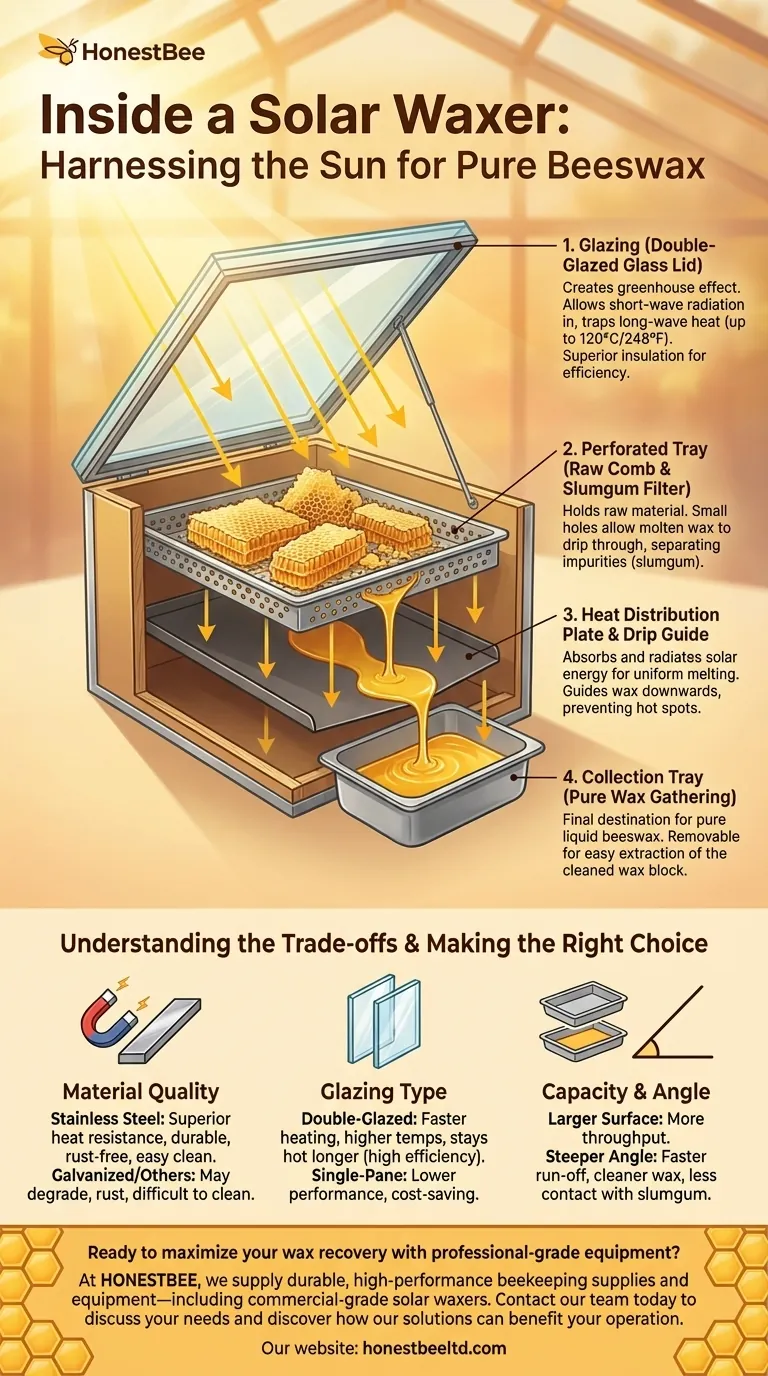
Related Products
- Fully Automatic Beeswax Embossing Machine Foundation Mill
- Stainless Steel Manual Honey Press with Guard for Pressing Honey and Wax
- Professional 4 Frame Self Reversing Electric Honey Extractor for Beekeeping
- HONESTBEE 6 Frame Self Reversing Electric Honey Extractor for Beekeeping
- Stainless Steel Manual 8 Frame Radial Honey Extractor Machine for Beehives
People Also Ask
- What is a wax melter used for in candle making? Achieve Professional, Scalable Production
- What makes the solar waxer a safe tool for melting wax? Harness the Sun's Power for Risk-Free Wax Melting
- What is the principle of operation of a wax melter? Master Efficient Beekeeping Wax Processing
- What is the function of a beeswax foundation machine? Boost Hive Efficiency and Honey Production
- What should be done if wax cools and causes a blockage in the valve of the wax melter? Clear It Safely & Prevent It


